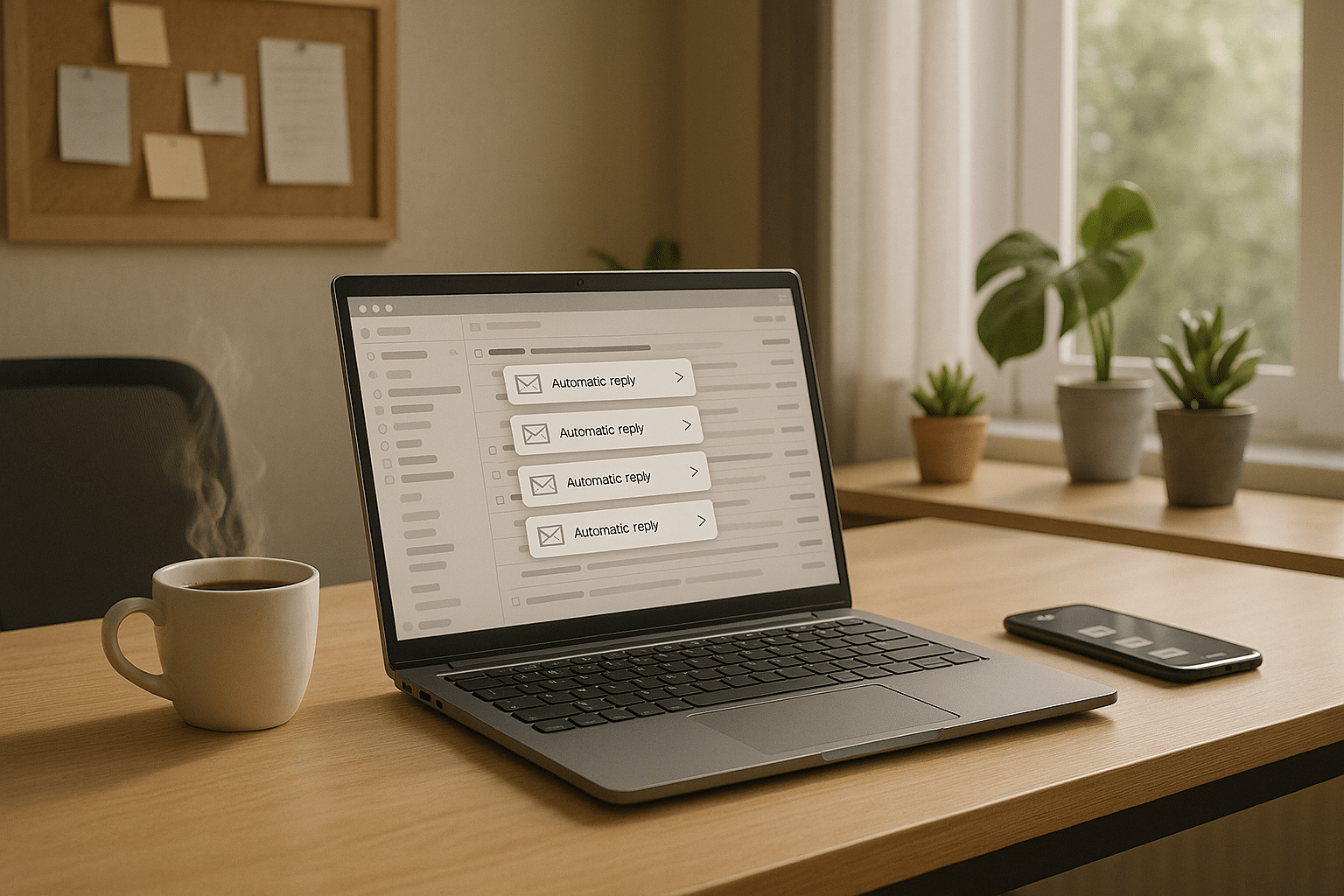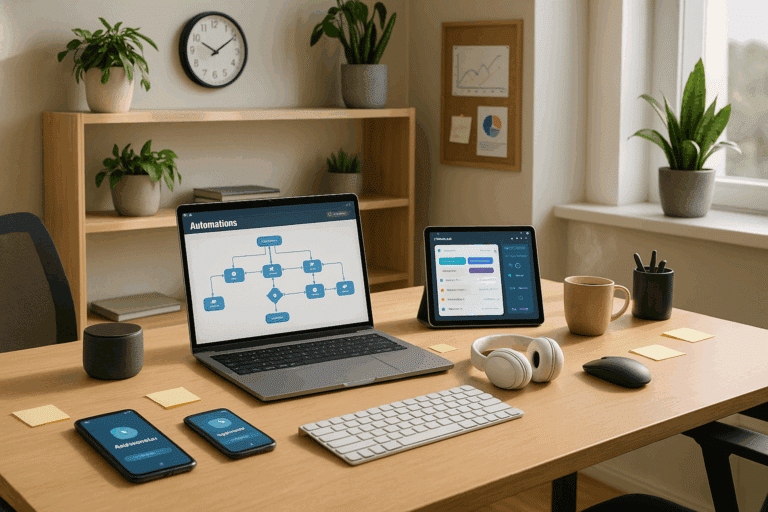In a world where remote work is becoming the new norm, managing email communication efficiently has emerged as a critical skill. 🌐 Without the luxury of face-to-face interactions, the importance of clear, concise, and prompt email responses has skyrocketed. However, as our inboxes continue to flood with an ever-growing number of emails, managing this communication can become overwhelming and time-consuming. But what if I told you that there’s a way to keep up with your overflowing inbox without sacrificing your productivity? 📈
Welcome to the world of automated email responses. 💼 Using automation, you can streamline your email communication effortlessly, allowing you more time to focus on your core tasks and boosting your productivity levels significantly. This article aims to introduce you to the concept of automated email responses, discuss why they are vital in the remote work scenario, and provide a step-by-step guide on how to implement them in your daily work routine.
The digital age has provided us with an array of tools and technologies that can help us work smarter, not harder. One such tool is email automation. Email automation, as the name suggests, refers to the process of automating your email responses using specific tools or software. This technology can help you respond to emails quickly and accurately, reducing the time you spend typing and rewriting responses. 😊
This article will delve deep into the nitty-gritty of automated email responses. We’ll discuss their benefits, explore different email automation tools, and provide practical examples of how you can leverage this technology to boost your productivity levels. Whether you’re a remote worker dealing with a constant influx of emails or a manager looking to improve your team’s communication efficiency, this article has something for you. 🎯
First, we’ll discuss the importance of efficient email communication in remote work. We’ll look at how poor email management can impact your productivity levels and discuss why automated email responses are the solution you need. We’ll also debunk some common myths about email automation and provide evidence-based arguments to support our claims. 👩💼
Next, we’ll explore different email automation tools, discussing their features, benefits, and drawbacks. We’ll provide a comprehensive comparison between these tools, helping you choose the one that suits your needs the best. 🛠️
Finally, we’ll provide a step-by-step guide on how to set up automated email responses. We’ll discuss how to identify the types of emails you should automate, how to create effective automated responses, and how to analyze your automation strategy’s effectiveness. 📚
While it may seem daunting at first, adopting automated email responses can revolutionize your email communication and significantly boost your productivity levels. So, are you ready to streamline your remote work communication effortlessly? Buckle up and let’s dive in! 🚀
Boost Your Productivity with Automated Email Responses
The world of remote work has brought about a dramatic shift in how we communicate. From spontaneous office conversations to scheduled Zoom meetings and emails – lots of emails. One major component of this shift has been the rise of email as the primary mode of communication. In fact, the average employee spends about 28% of their workweek managing their inbox, according to a report by McKinsey. But what if there was a way to cut down this time significantly? Enter automated email responses. By leveraging automation, you can streamline your email communication and boost your productivity, giving you more time to focus on what really matters: your work.
Automated email responses, also known as autoresponders, are pre-set messages that are sent out automatically when specific criteria are met. They can be used to acknowledge receipt of an email, provide quick answers to frequently asked questions, or even guide a customer through a multi-step process, among other things. By setting up autoresponders, you can ensure a consistent, timely response, reduce your workload, and improve your communication efficiency.
But how can you set up automated email responses? What are some best practices to follow? And what are the different types of automated email responses you can use? Let’s dive into these topics and more to help you boost your productivity with automated email responses.
Setting Up Automated Email Responses
Setting up automated email responses is relatively straightforward. Most email service providers offer this functionality, including Gmail, Outlook, and Yahoo Mail. The exact steps may vary slightly from one provider to another, but the general process remains the same.
First, you need to create your automated response. This could be a simple “Thank you for your email” message, a detailed FAQ response, or anything in between. It’s crucial to ensure your message is clear, concise, and professional. Remember, this is an automated response, so it needs to be applicable to a wide range of scenarios.
Next, you need to set the criteria for when the automated response should be sent. This could be when you receive an email from a specific address, when a particular keyword is included in the subject or body of an email, or when an email is sent to a specific folder or label in your inbox, among other things. Once you’ve set up your automated response and criteria, your email service provider will take care of the rest, sending out your response whenever the criteria are met.
For a detailed guide on how to set up automated email responses in Gmail, watch this YouTube video: “How to Set up Auto-Reply in Gmail” by Simpletivity.
Best Practices for Automated Email Responses
While automated email responses can significantly improve your productivity, it’s important to use them correctly. Here are a few best practices to keep in mind:
- Keep it professional: Remember, your automated response is a reflection of you and your work. Keep it professional, polite, and concise. Avoid using slang or informal language, unless it’s appropriate for your audience.
- Use personalization: Personalization can make your automated responses more engaging and relevant. Most email service providers allow you to include the recipient’s name, the subject of their email, and other personalized details in your response.
- Update regularly: It’s important to regularly review and update your automated responses to ensure they’re still relevant and effective. This is especially true if you’re using them for FAQs or other information that may change over time.
Types of Automated Email Responses
There are several types of automated email responses you can use, depending on your needs and the nature of your work. Here are a few examples:
| Type of Automated Response | Description |
|---|---|
| Confirmation of receipt | This type of response is used to acknowledge that you’ve received an email. It can be helpful for managing expectations and ensuring the sender that their message has been received. |
| Out of office | An out of office response lets people know you’re not available and when they can expect a response. This is especially useful for managing expectations when you’re on vacation or away from your desk for an extended period. |
| FAQs | FAQ responses can be used to provide quick answers to common questions. This can be a great way to reduce your workload and improve your communication efficiency. |
In conclusion, automated email responses can be a powerful tool for boosting your productivity in the world of remote work. By setting up autoresponders, following best practices, and leveraging different types of responses, you can streamline your email communication, reduce your workload, and give yourself more time to focus on your work.
Want to learn more? Watch the YouTube video “How to Automate Your Emails & Save Hours Each Week” by Simpletivity for more tips and strategies.

Conclusion
In conclusion, we’ve delved into some deep technical concepts throughout this article. We started by exploring the very foundations of Information Technology (IT) and Software Engineering, unraveling the interlaced complexities, and breaking them down into understandable chunks. The detailed walk-throughs of specific processes, from software development life cycle stages to coding best practices, aimed to provide you with comprehensive insights into these critical aspects of the field.
We stressed the importance of continuous learning and staying updated with the ever-evolving landscape of the IT and engineering sectors. In an industry that is always in flux, your ability to adapt and grow alongside it is what truly sets you apart. 📈💻🌐
We also touched on the role of data security, an area that cannot be overlooked in today’s increasingly digital world. The protection of sensitive information is a fundamental concern, and it’s crucial that everyone involved in the sector takes it very seriously. As stated before, the weakest link in any security system is the human element, so it’s of utmost importance to stay educated and vigilant. 🛡️🔒
But our journey doesn’t end here. This is a field ripe with opportunities for exploration and innovation, and we encourage you to dive in further. The fascinating world of IT and engineering is vast, and there’s so much more to discover and understand. With the tools and knowledge provided in this article, you are now better equipped to navigate this exciting landscape.
In the grand scheme of things, our discussion not only underscores the importance of these technical aspects but also aims to inspire you to delve deeper. It highlights the amazing possibilities that IT and engineering hold in shaping our world and solving some of the most pressing problems of our time. 💡🌍
We hope you found this article informative and engaging. As always, we appreciate your feedback and would love to hear your thoughts. Feel free to comment below, share the article with others who might find it interesting, or even apply what you learned in your own projects or studies. Don’t hesitate to revisit some of the resources provided throughout the text for more in-depth knowledge.
This is an open invitation to join the conversation, to learn and grow together in this fascinating world of IT and engineering. After all, knowledge shared is knowledge multiplied.
Never stop learning, and keep pushing the boundaries of what’s possible. Remember, the future is created by those who are brave enough to envision it. 🚀💫
References:
🙏🏽 Thank you for reading and stay tuned for more detailed, technical articles like this one.
Rodrigo Almeida,
Technical Writer, Engineer, and lifelong learner.



